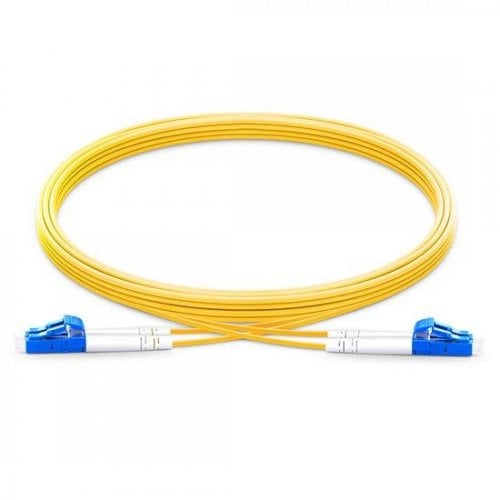# Duplex Fiber Optic Cable: A Comprehensive Guide to Its Applications and Benefits
## What is Duplex Fiber Optic Cable?
Duplex fiber optic cable is a type of optical fiber cable that consists of two fibers, typically arranged in a zipcord (side-by-side) configuration. These two fibers are used for bidirectional communication, allowing data to be transmitted and received simultaneously. This design makes duplex fiber optic cables ideal for applications requiring high-speed, reliable, and efficient data transfer.
## Key Features of Duplex Fiber Optic Cable
Duplex fiber optic cables are known for their unique characteristics, which set them apart from other types of fiber optic cables. Some of the key features include:
– Two Fibers: The cable contains two separate fibers, enabling simultaneous data transmission and reception.
– High Bandwidth: Duplex cables support high data transfer rates, making them suitable for demanding applications.
– Low Signal Loss: The design minimizes signal attenuation, ensuring reliable communication over long distances.
– Durability: These cables are built to withstand harsh environmental conditions, including temperature fluctuations and physical stress.
## Applications of Duplex Fiber Optic Cable
Duplex fiber optic cables are widely used across various industries due to their versatility and performance. Some common applications include:
### Telecommunications
In the telecommunications industry, duplex fiber optic cables are essential for transmitting voice, video, and data over long distances. They are commonly used in backbone networks, data centers, and broadband connections.
### Networking
Duplex cables are a staple in networking environments, particularly in local area networks (LANs) and wide area networks (WANs). They enable high-speed data transfer between devices, ensuring seamless communication.
### Medical Imaging
In the medical field, duplex fiber optic cables are used in imaging systems such as endoscopes and MRI machines. Their ability to transmit high-resolution images with minimal signal loss is crucial for accurate diagnostics.
### Industrial Automation
Industrial automation systems rely on duplex fiber optic cables for real-time data transmission between sensors, controllers, and other devices. Their durability and reliability make them ideal for harsh industrial environments.
## Benefits of Using Duplex Fiber Optic Cable
Choosing duplex fiber optic cables for your communication needs offers several advantages:
– Enhanced Performance: The bidirectional design ensures efficient data transfer, reducing latency and improving overall performance.
– Scalability: Duplex cables can support increasing bandwidth demands, making them future-proof for growing networks.
– Security: Fiber optic cables are immune to electromagnetic interference (EMI), providing a secure and stable connection.
– Cost-Effectiveness: Despite their advanced features, duplex fiber optic cables are cost-effective in the long run due to their durability and low maintenance requirements.
## Conclusion
Duplex fiber optic cables are a critical component in modern communication systems, offering high performance, reliability, and versatility. Whether you’re in telecommunications, networking, medical imaging, or industrial automation, these cables provide the necessary infrastructure for efficient data transfer. By understanding their applications and benefits, you can make informed decisions to optimize your communication networks.
Keyword: duplex fiber optic cable
